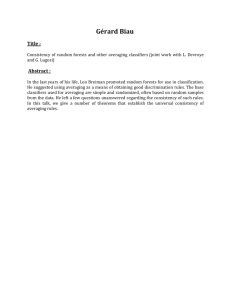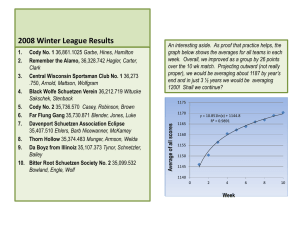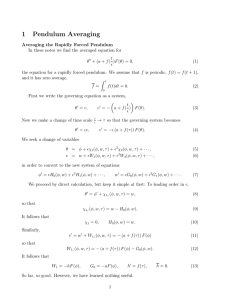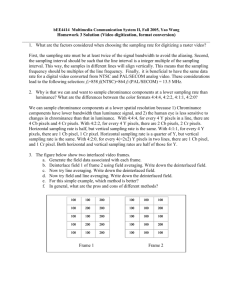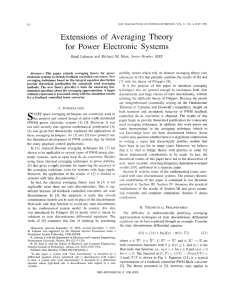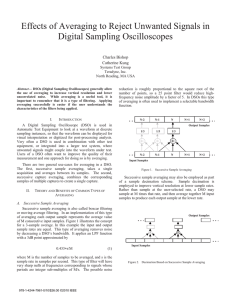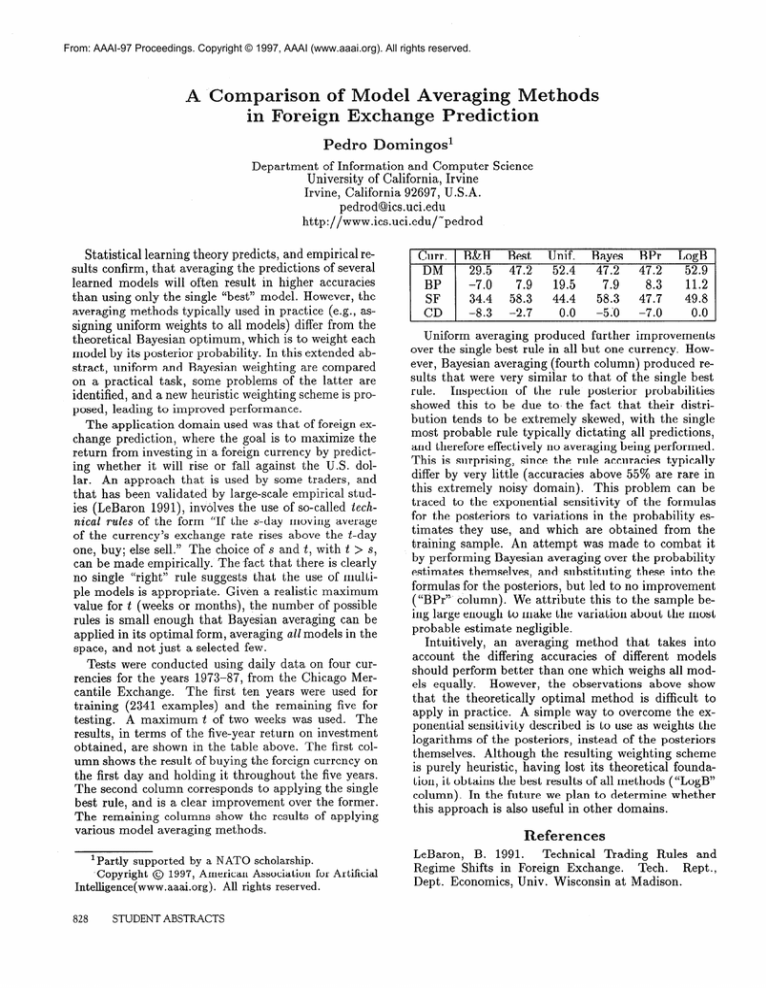
From: AAAI-97 Proceedings. Copyright © 1997, AAAI (www.aaai.org). All rights reserved.
A Comparison
of Model Averaging Met
in Foreign Exchange Prediction
Pedro Domingosl
Department of Information and Computer
University of California, Irvine
Irvine, California 92697, U.S.A.
pedrod@ics.uci.edu
http://www.ics.uci.edu/-pedrod
Statistical learning theory predicts, and empirical results confirm, that averaging the predictions of several
learned models will often result in higher accuracies
than using only the single “best” model. However, the
averaging methods typically used in practice (e.g., assigning uniform weights to all models) differ from the
theoretical Bayesian optimum, which is to weight each
model by its posterior probability. In this extended abstract, uniform and Bayesian weighting are compared
on a practical task, some problems of the latter are
identified, and a new heuristic weighting scheme is proposed, leading to improved performance.
The application domain used was that of foreign exchange prediction, where the goal is to maximize the
return from investing in a foreign currency by predicting whether it will rise or fall against the U.S. dollar. An approach that is used by some traders, and
that has been validated by large-scale empirical studies (LeBaron 1991), involves the use of so-called technical rules of the form “If the s-day moving average
of the currency’s exchange rate rises above the t-day
one, buy; else sell.” The choice of s and t, with t > s,
can be made empirically. The fact that there is clearly
no single “right” rule suggests that the use of multiple models is appropriate.
Given a realistic maximum
value for t (weeks or months), the number of possible
rules is small enough that Bayesian averaging can be
applied in its optimal form, averaging all models in the
space, and not just a selected few.
Tests were conducted using daily data on four currencies for the years 1973-87, from the Chicago Mercantile Exchange.
The first ten years were used for
training (2341 examples)
and the remaining five for
testing.
A maximum t of two weeks was used. The
results, in terms of the five-year return on investment
obtained, are shown in the table above. The first column shows the result of buying the foreign currency on
the first day and holding it throughout the five years.
The second column corresponds to applying the single
best rule, and is a clear improvement over the former.
The remaining columns show the results of applying
various model averaging methods.
‘Partly
supported
by a NATO scholarship.
*Copyright @ 1997, American Association
for Artificial
Intelligence(www.aaai.org).
All rights reserved.
828
STUDENT ABSTRACTS
Science
Uniform averaging produced further improvements
over the single best rule in all but one currency. However, Bayesian averaging (fourth column) produced results that were very similar to that of the single best
rule.
Inspection
of the rule posterior probabilities
showed this to be due to the fact that their distribution tends to be extremely skewed, with the single
most probable rule typically dictating all predictions,
and therefore effectively no averaging being performed.
This is surprising, since the rule accuracies typically
differ by very little (accuracies above 55% are rare in
this extremely noisy domain).
This problem can be
traced to the exponential sensitivity of the formulas
for the posteriors to variations in the probability
estimates they use, and which are obtained from the
training sample. An attempt was made to combat it
by performing Bayesian averaging over the probability
estimates themselves, and substituting
these into the
formulas for the posteriors, but led to no improvement
(“BPr” column). We attribute this to the sample being large enough to make the variation about the most
probable estimate negligible.
Intuitively,
an averaging method that takes into
account the differing accuracies of different models
should perform better than one which weighs all models equally.
However, the observations
above show
that the theoretically
optimal method is difficult to
apply in practice.
A simple way to overcome the exponential sensitivity described is to use as weights the
logarithms of the posteriors, instead of the posteriors
themselves. Although the resulting weighting scheme
is purely heuristic, having lost its theoretical foundation, it obtains the best results of all methods (“LogB”
column). In the future we plan to determine whether
this approach is also useful in other domains.
References
LeBaron,
B. 1991.
Technical
Trading Rules and
Regime Shifts in Foreign Exchange.
Tech.
Rept.,
Dept. Economics, Univ. Wisconsin at Madison.

